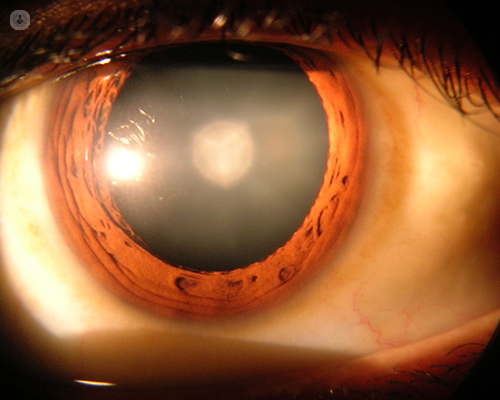The cataract operation
Written by:In a previous article we already explained what a cataract is and we indicate which is the best time to operate but it should be remembered briefly. It is necessary to operate when the decrease in vision interferes with the patient's usual activities or when the ophthalmologist appreciates an increase in intraocular pressure or other complications related to the progression of the cataract.
Risks in the operation
All surgeries have some risk, especially when they are intraocular, but nowadays the results of cataract surgery are excellent and visual recovery is usually quick and satisfactory in the vast majority of cases. Even with everything, we must know that 100% success can not be guaranteed, we can only take maximum preventive measures so that the probability of risk is very low, and if a complication occurs, it can be resolved without major consequences .
How cataract surgery is performed
The intervention is usually indicated in both eyes, although one of them is more advanced than the other. If we only perform one eye operation, the signals that reach the brain are different and that makes us not see well, there is a deterioration of binocular vision, the relief vision, so necessary in tasks of precision in the calculation of distances when we drive.
Until now, one eye was performed first and after a few days the other eye, but now it is already recommended to start surgery on both eyes in the same session, this is what is called: bilateral cataract surgery. This allows a quicker visual adaptation and reduce the patient's downtime and we can do so provided that the necessary means are available, adapted operating rooms and specialized personnel, as well as the use of new antibiotics that reduce the risk of infections.

The surgical technique that is currently used is called phacoemulsification of the cataract , using ultrasonic energy to fragment it, although new energies are already being applied, such as the femtosecond laser, which although very promising is still in the improvement phase.. The techniques of ultrasonic fragmentation allow to extract the cataract by a small incision of 2 or 3 mm, in our center we have even managed to reduce the size to 1 mm. which significantly reduces surgical trauma.
A cannula is inserted that will destroy the contents of the cataract , aspiring it later, this way the capsular bag remains transparent, empty and ready to place in its interior an intraocular lens that replaces the natural. Currently we have intraocular lenses with flexible materials, which allow us to introduce them through the small incision made at the beginning of surgery. Thus, the lens is deployed inside the lens bag replacing the natural lens. There are several types of lenses, monofocales that are like the glass of the glasses to see from afar and the multifocal lenses to see from far and near. In recent years, a new type of lens has appeared that seeks to emulate the physiological mechanism of the lens; it is the pseudo-accommodative lens that gives a better optical quality. The surgery ends without the need for stitches, hydrating the small incisions and injecting a broad spectrum antibiotic into the eye to prevent infections.
The operation lasts about ten minutes and is usually done with topical anesthesia (anesthetic drops) and sedation so that the patient is relaxed. In most cases it is not necessary to occlude the eye at the end of the operation and the patient can see with the operated eye when leaving the operating room.
The visual recovery is very fast , being able to obtain a useful vision from the first hours of the intervention, however, the days after the surgery the visual capacity will improve gradually. At 2 or 3 weeks after the operation, the maximum vision is usually reached and even this time can be reduced to 1 week when bilateral surgery is performed (both eyes in one session).
Life after the postoperative period
After the operation, life can be practically normal, although initially your vision is not perfect. The first days you have to avoid physical exercises that involve sudden or violent movements of the head. It is also very important not to rub your eyes and avoid, only the first days, sleeping on your stomach. In addition, it is advisable to use sunglasses to go out on the street, thus protecting the eye and avoiding the glare that normally appears after the intervention.
When special lenses are implanted, such as toric lenses for astigmatism or multifocal lenses to eliminate the need for distance and near glasses, it may take a little more time to achieve a stable and optimal vision, if that time lengthens or poses difficulties for normal life, there are special exercises to improve this situation.


